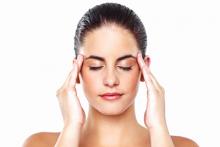
“One of the best things you can do for yourself when you are under stress is to take a break and get a massage,” says Kristine Kaoverii Weber in Healing Self-Massage. Here are a few self-massage techniques to relieve stress when you are between appointments for professional massage.
Even a few minutes of self-massage sprinkled throughout the day can reduce stress and worry, increase focus, encourage stillness, and provide a time to just breathe. Not only does self-massage relieve localized aches and pain, it encourages a general state of peace that alleviates “the cumulative effects of stress,” writes Mary Atkinson in A Practical Guide to Self-Massage. “A simple five-minute hand-and-foot massage can lower blood pressure and heart rate and reduce feelings of panic.”
Weber suggests learning three simple self-massage techniques to use on any area of the body. Effleurage, or long-stroking, is “a simple gliding action over the skin,” Weber says. Petrissage “is a kneading stroke used to lift up the muscle and wring or squeeze it.” Kneading can aid the body in ridding itself of waste; use a brisk stroke on a small area of the body to create friction to target deep muscular tissues.
Nicola McGill, a holistic complementary therapist who blends aromatherapy with massage, says when dealing with stress, we must ask ourselves, “Where is the stress coming from? And how is it affecting the body?” If stressors are causing a digestive problem, for example, the focus of massage may center on the abdominal region.
If stress manifests itself in headache, a neck-and-shoulder massage “can often relieve tension headache more effectively than painkillers, advises Jenny Sutcliffe in The Complete Book of Relaxation Techniques. Atkinson adds that gentle strokes with the fingertips across the forehead can help you relax. And in Healing Massage, Susan Mumford suggests long-stroking the foot from heel to toe for stress-relief.
According to Weber, a three-step ayurvedic Indian head massage helps reduce stress. This method is easily accomplished sitting in a chair or lying down. First rub your temples with your fingertips in a gentle, circular pattern for about one minute. For the second step, “shampoo” the scalp. With gentle fingertips, massage the entire scalp in small circles. Begin at the temples and move toward the back of the head. Continue for one minute. Finish the Indian head massage by combing the scalp. Begin with fingertips above the forehead, at the hairline, and comb over the top of the head and toward the neck and shoulders. Weber suggests repeating this stroke 10 times.
Practicing self-massage daily helps increase awareness of life stressors in between your professional massages. Remember: whether you seek a professional massage or a self-massage respite, savor those moments when you can focus solely on yourself.




